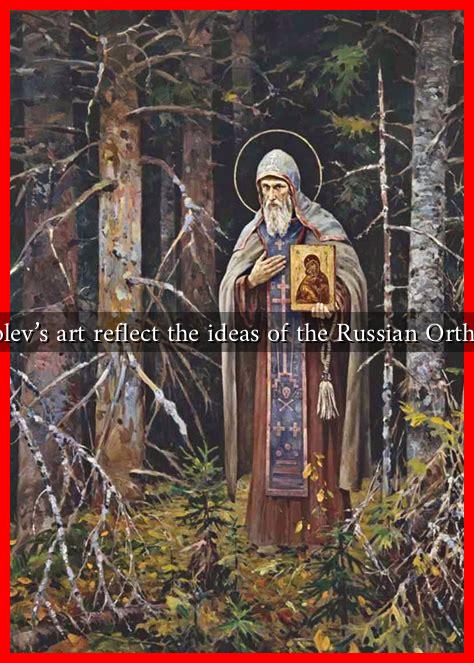-
Table of Contents
How Did Rublev’s Art Reflect the Ideas of the Russian Orthodox Church?
Andrei Rublev, a 15th-century Russian icon painter, is often regarded as one of the greatest artists in the history of Russian art. His works are not merely aesthetic creations; they are deeply imbued with the spiritual and theological ideas of the Russian Orthodox Church. This article explores how Rublev’s art reflects the core beliefs and values of the Orthodox faith, emphasizing the significance of his most famous work, “The Trinity.”
The Spiritual Foundation of Rublev’s Art
Rublev’s art is characterized by its profound spirituality, which aligns closely with the teachings of the Russian Orthodox Church. The following elements illustrate how his work embodies these spiritual foundations:
- Divine Light: Rublev often depicted divine light as a central theme in his icons, symbolizing the presence of God. This is evident in his use of gold leaf and bright colors, which create a sense of ethereality.
- Symbolism: His paintings are rich in symbolism, with each element carefully chosen to convey theological messages.
. For instance, the colors used in his works often represent different aspects of the divine.
- Humanity and Divinity: Rublev’s art frequently explores the relationship between humanity and the divine, emphasizing the Orthodox belief in the possibility of communion with God.
Case Study: “The Trinity”
One of Rublev’s most celebrated works, “The Trinity,” serves as a prime example of how his art reflects Orthodox ideas. Painted around 1410, this icon depicts the three angels who visited Abraham, symbolizing the Holy Trinity. The painting is not just a representation of biblical figures; it encapsulates several key theological concepts:
- Unity in Diversity: The three angels are distinct yet unified, representing the Orthodox understanding of the Trinity as three persons in one essence.
- Hospitality and Love: The scene conveys a sense of warmth and hospitality, reflecting the Orthodox emphasis on love and community.
- Color and Composition: The use of color in “The Trinity” is deliberate; the soft, harmonious palette evokes a sense of peace and divine presence.
Art historians have noted that “The Trinity” is not merely an icon but a theological statement. According to the Russian Orthodox Church, it invites viewers to contemplate the nature of God and their relationship with Him. This icon has been studied extensively, with scholars like Dmitry V. Kolesnikov highlighting its significance in understanding Rublev’s spiritual vision.
Rublev’s Influence on Orthodox Art
Rublev’s impact on Russian Orthodox art extends beyond his lifetime. His techniques and themes have influenced generations of artists, shaping the visual language of Orthodox iconography. Key aspects of his influence include:
- Iconography Standards: Rublev established a standard for icon painting that emphasized spiritual depth over mere representation.
- Emphasis on Community: His works often reflect communal values, encouraging viewers to engage with their faith collectively.
- Integration of Theology and Art: Rublev’s ability to merge theological concepts with artistic expression has inspired countless artists to explore similar themes.
Conclusion: The Enduring Legacy of Rublev’s Art
Andrei Rublev’s art serves as a profound reflection of the ideas and values of the Russian Orthodox Church. Through his use of divine light, symbolism, and themes of unity and love, Rublev created works that invite contemplation and spiritual engagement. His masterpiece, “The Trinity,” stands as a testament to his ability to convey complex theological ideas through visual art. The enduring influence of Rublev on Orthodox iconography underscores the importance of his work in both religious and artistic contexts.
In summary, Rublev’s art is not just a collection of beautiful images; it is a spiritual journey that continues to resonate with viewers today. His legacy reminds us of the power of art to express and explore the deepest aspects of faith.





